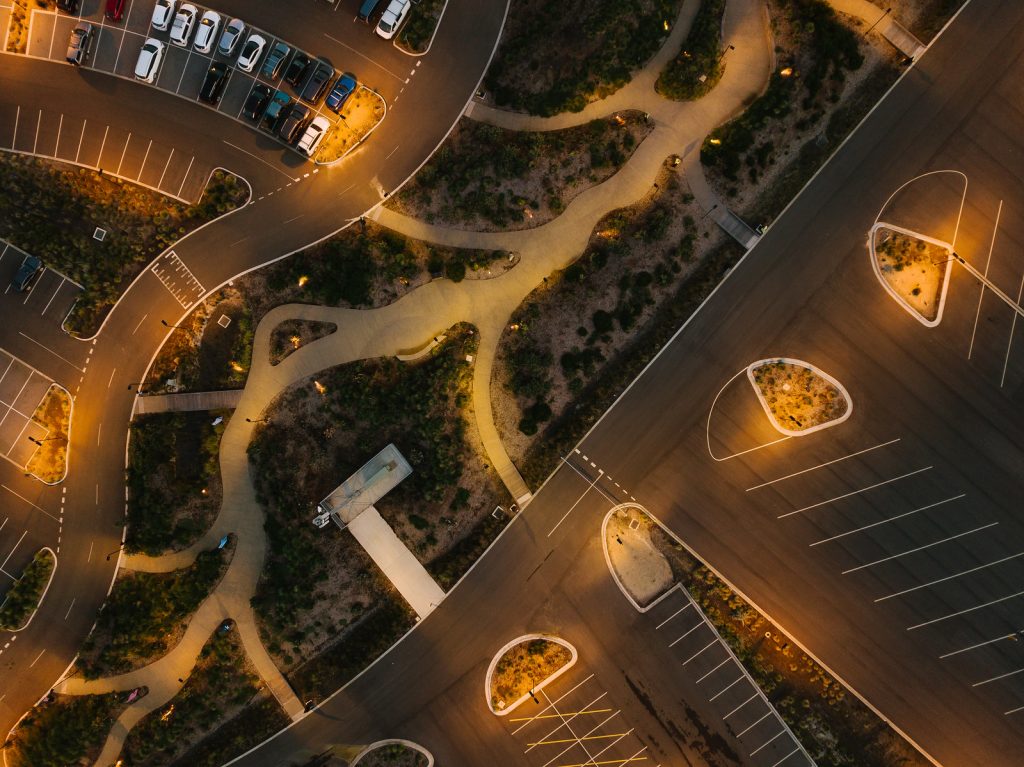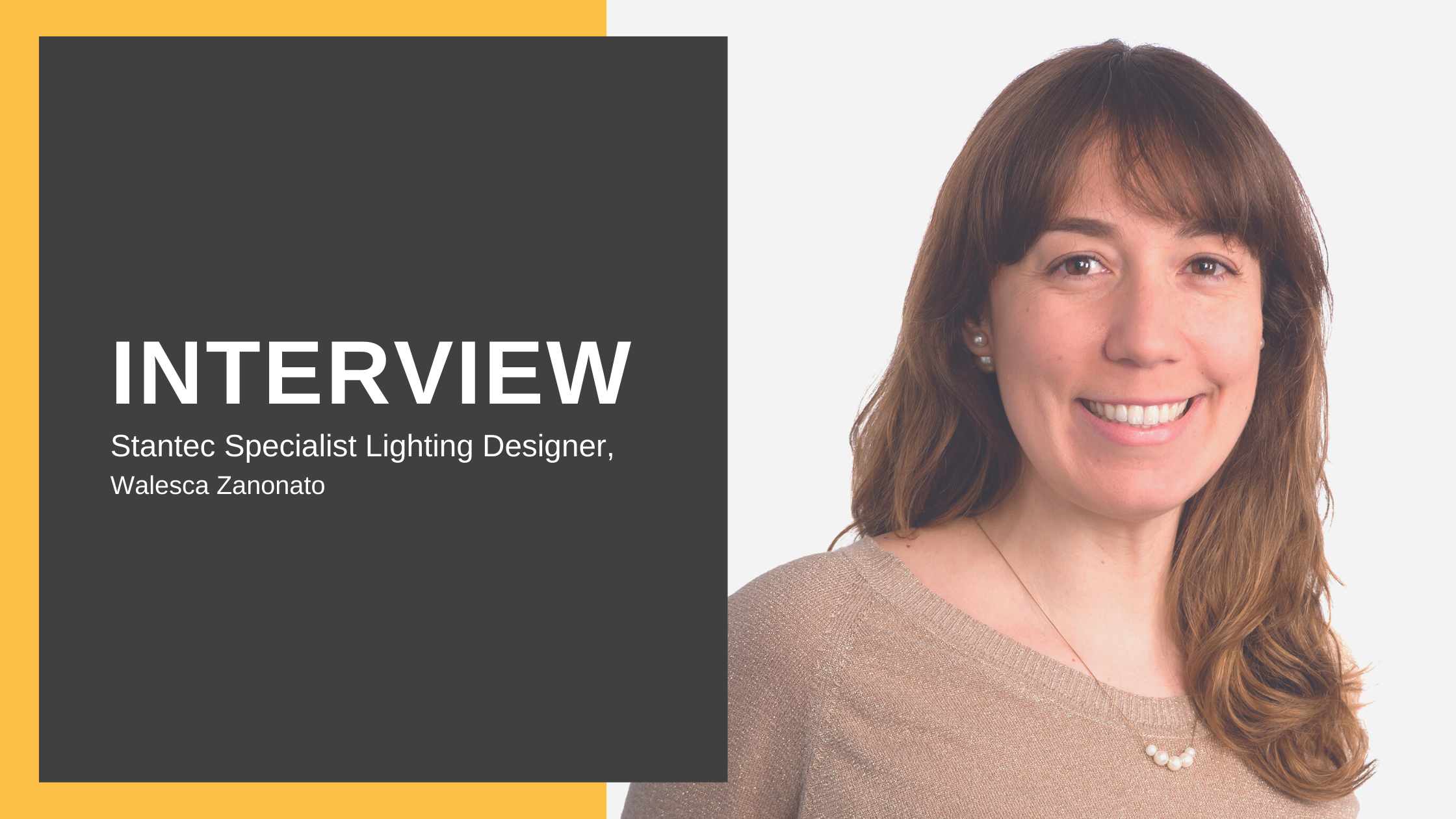Exterior Lighting: Behind the Scenes with a Lighting Designer
Introduce yourself, tell us about your background and how you have gotten to where you are in your career.
My name is Walesca Zanonato, I am a Specialist Lighting designer at Stantec, but it wasn’t always like this. I have studied Architecture & Urbanism, and a Bachelor of Tourism back in Brazil, where I am from. After graduating in 2011, at age 25, I spent a year working as a Guest Relations at Walt Disney World, in the United States. I learned from the best in customer service and that granted me a job as a VIP Guest Relations at Madinat Jumeirah Resort, in Dubai, staging suites to perfection for royalties, CEOs and celebrities. There, I had the opportunity to do cross-training in the Engineering Department, learning the operations and jargon of the building services and engineering world. Back in Brazil, I lived in Sao Paulo and in the heart of the Amazon, Manaus, where I was exposed to shopping mall engineering. Not quite architecture, but I love to learn and make the best of each opportunity.
When I arrived in Australia, as a backpacker, I went to a farm in regional Victoria, where I spent 4 months picking apples, pears, and other fruit. 88 days of farm work would allow me to apply for a second year in Australia, so I accepted the challenge. Fresh from the farm, I moved to Melbourne, and a friend of a friend gave me a chance for an interview. That is how in 2016 I started at Legacy Wood & Grieve (WGE) as a CAD & Revit Designer in the Electrical Team. Most architects wouldn’t normally work in engineering companies, but that was the tipping point in my career. From the beginning, the specialist lighting team at then WGE (Now, part of Stantec) was keen to have me close and I eventually became a member of the team.
All those times I had the benefit of learning from engineers in Dubai, Brazil and here in Melbourne have contributed to the Lighting Designer that I am today. Not everyone has this type of opportunity, and I certainly don’t take it for granted.
What has been your most memorable exterior project to date?
I would have to say Penguin Parade. Especially the car park, which may sound a bit strange, but I’ll explain: Car parks are a space which you design based on standards and results, primarily. There is not much flair or aesthetical appeal that can be implemented there. However, in the Penguin Parade, there was another dimension to be considered, the local ecosystem. The penguins, but also the kangaroos, wombats, birds, rodents, and many other lives that share the entire area, including everywhere around the car park. The chips utilised in the external area luminaires are extremely respectful to the wildlife and knowing that the extra thought was extended to the often so technical car park, makes me proud.

What are the core responsibilities you have as a lighting designer?
I like to say that, as a lighting designer, I am in a supporting role. My first responsibility is to enhance the architectural and landscape designs after dark. Therefore, understanding the client and architect’s vision and translating that to the lighting world is a core responsibility. Secondly, I am responsible for keeping my clients informed of the possibilities, options, and strategies suitable for the project, giving them options to choose from but also making recommendations. The third core responsibility, I believe, is the project compliance with the standards. It is in my hands to create a pleasant lighting design that also meets the regulations, providing the correct atmosphere as specified in the Australian Standards.
What are the greatest challenges when it comes to exterior lighting and how do you address them in your design process?
Every project comes with its own challenges, but a recurring one is light spill. In the past, there wasn’t much that could be done, but since we started using LED luminaires, we have been able to manipulate the optic beams. That is great because now we have an advantage when facing the challenge of spill light.
Another challenge is interfering within the locale of a community. As we abide by the Australian Standards, sometimes the ideal quantity, height or location for poles doesn’t align with the preferences of the locals. We then go back to the drawing board and explore new alternatives with the community in mind.
What trends are you seeing in external lighting design?
Certainly, wildlife-friendly luminaires are an important trend. The common perception that 4000K is the colour temperature for external lighting, is changing. We are slowly seeing designers and councils more and more comfortable with warmer tones. From 3000K to Amber, they are all a step in the right direction.
Internet of Things is another exciting trend. With that, a pole is no longer just a pole, it is part of a network that gathers and shares data to the benefit of entire neighbourhoods, even cities. I look forward to seeing where smart cities can take us.
Why is it essential to understand the environment you are working within?
Before we start a project, it is essential to understand who we are delivering that space to. Knowing about the community habits will help to decide which areas and niches to highlight after dark. A rural area requires less illumination than an urban environment, which may have more night activities. But also, it is necessary to know what the local biota is and what their night habits are that we should be aware of. All this gathering of knowledge will set the parameters for the lighting design. It will affect every decision made about luminaires, optics, controls, and colour temperature.
How can lighting controls and luminaire technology be used to have a positive impact on exterior lighting?
Both work together to reduce the light impact on the local ecosystem. With lighting controls, it is possible to reduce the lighting output outside of peak hours and turn lights off at a pre-determined time. It reduces the amount of time that nature is exposed to artificial light at night. Luminaire technology, more specifically, optics, are big allies when it comes to light spill. With optics, we control where the light beam is projected, avoiding negative impact into areas that should remain in darkness, including the sky. There is a vast range and combinations of optics in the market with solutions for virtually every scenario.
How do you think external lighting contributes to society?
Through lighting, we express art and emotion. It allows us to experience day and night in different ways. Night can be colourful, can be dramatic or romantic. Our communities can spend more time at the parks and even experience a nature spectacular penguin parade every night. Lighting brings us together and allows us to be closer to nature for longer. Lighting is evolving rapidly, and the more it does, the better it addresses the wellbeing of all living beings from human-centric to wildlife-friendly; light is developing for the benefit of all.

